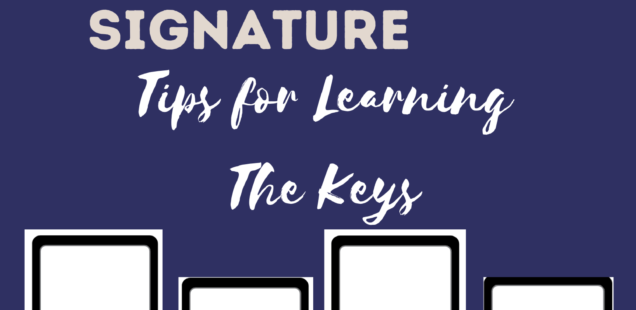
Tips for Learning Key Signatures
Learning key signatures is extremely useful, but can also be challenging for young musicians. We teachers spend a lot of time reviewing, checking in, and assessing students' knowledge of key signatures.
If you are working on learning your key signatures and the names of your keys, the goal of this article is to help you.
Key Signature Basics
The key signature is always written to the right of the clef sign, as we see below.
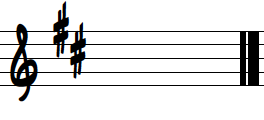
It tells us which notes throughout a piece of music are to be played as sharp or flat. The key signature also tells us the key or tonal center For example, if there are two sharps in the key, we are likely centered around D major or B minor, the relative minor of D major.
This is extremely useful because if we know we are in the key of D major, we can fix our ears and mind to play in that key. Additionally, we will know that we are playing all natural notes except for F# and C# (unless the the music indicates otherwise by additional accidental markings.)
Circle of 4ths and 5ths
Memorization of the keys is made easier by learning the circle of 5ths (or 4ths).
There are 12 keys and in the circle of 5ths. The keys move around the circle like the hour hand of a clock.
At 12 o’clock is the key of C major (no sharps - no flats).
If we continue to move around the circle by 5ths to about 1 o’clock we will be in the key of G major. G major has one sharp, F#. If you continue moving around the circle, you will land on D major and so on.
Notice, the right side of the circle are our sharp keys and the left side is our flat keys.
Conversely, if you move from C major and go up a 4th, you will be in the key of F major - one flat - Bb. Continue around the circle by moving up to the next key by a 4th, in this case, Bb major.
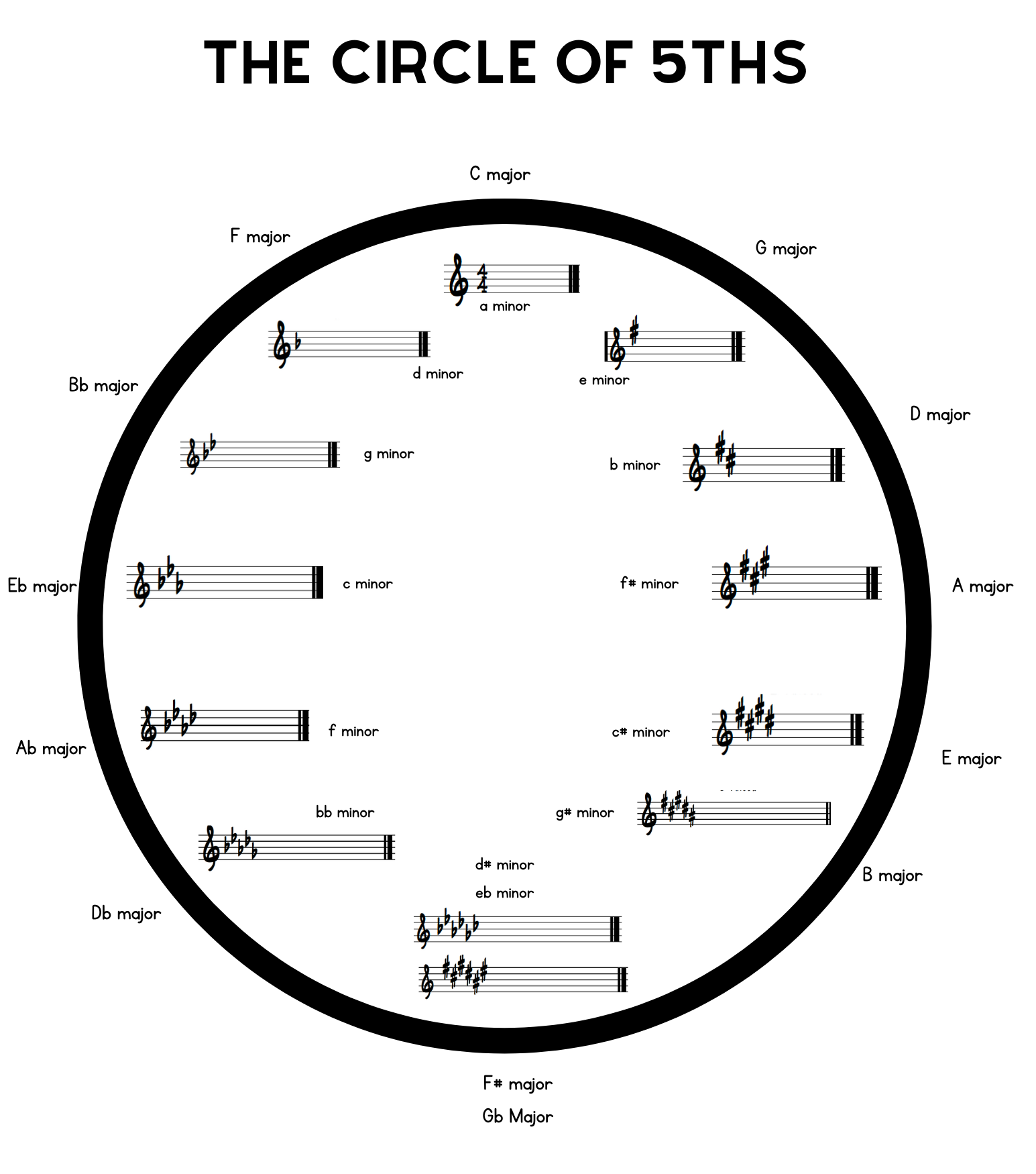
Learning Key Signatures
What worked for me in learning my key signatures was plain old memorization and repetition. Study the circle of 5ths and commit them to memory. If memorization is challenging, here are two tricks you can use for identifying your sharp and flat keys. They're incredibly helpful to students.
Sharp Key Trick
Here is a trick for being able to name the key for any sharp key.
Let’s look at the key of G major.
Step one is to look at the key signature and identify the sharps.
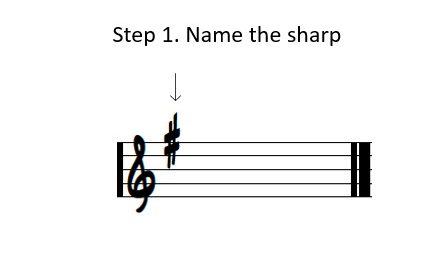
Well, we see one sharp, in this case it is F#.
The second step is to move up a half step from the last sharp written. In this case the note that is sharp is, F#.
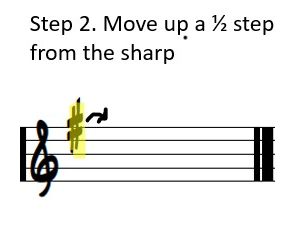
The third step is to now name your key. G major!
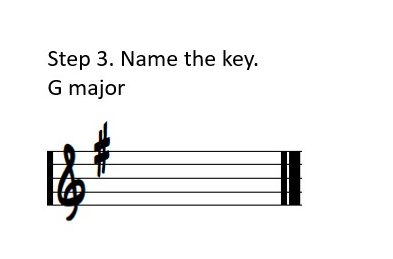
Flat Key Trick
Let’s look at the key of Bb major.
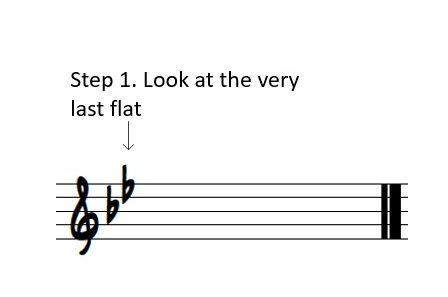
Second, move directly to the left to the note before the last flat. In this case, the last flat is Eb.
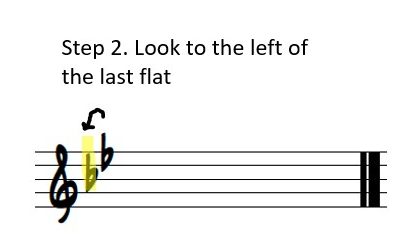
Third, name the flat. In this case, it is Bb.
We have now found the name of the key. The key with two flats is Bb major.
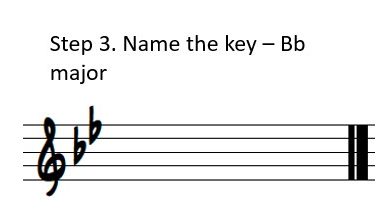
Resources
Do you need help learning and practicing your key signatures?
I created a few resources for my students and I've made them available to teachers and students. The resources below have proven to be extremely helpful to my students when we have been working on key signatures.
Key Signature Flashcards (Treble and Bass Clef Editions)
Included in the Music Theory 101 - Key Signature Flashcards - Treble Clef and Bass Clef Bundle are:
- Flashcards for all sharp keys (including C major)
- Flashcards for all flat keys (including C major)
- Flashcards with labels and without labels
- All keys are written in treble clef and bass clef
Use these flashcards as a warm up, do now, review, study tool, or assessment. Perfect for use in a music theory, general music, private studio, orchestra, band, or choir classroom.
This set of flashcards are designed to be clear, simple, and help your students master their keys.
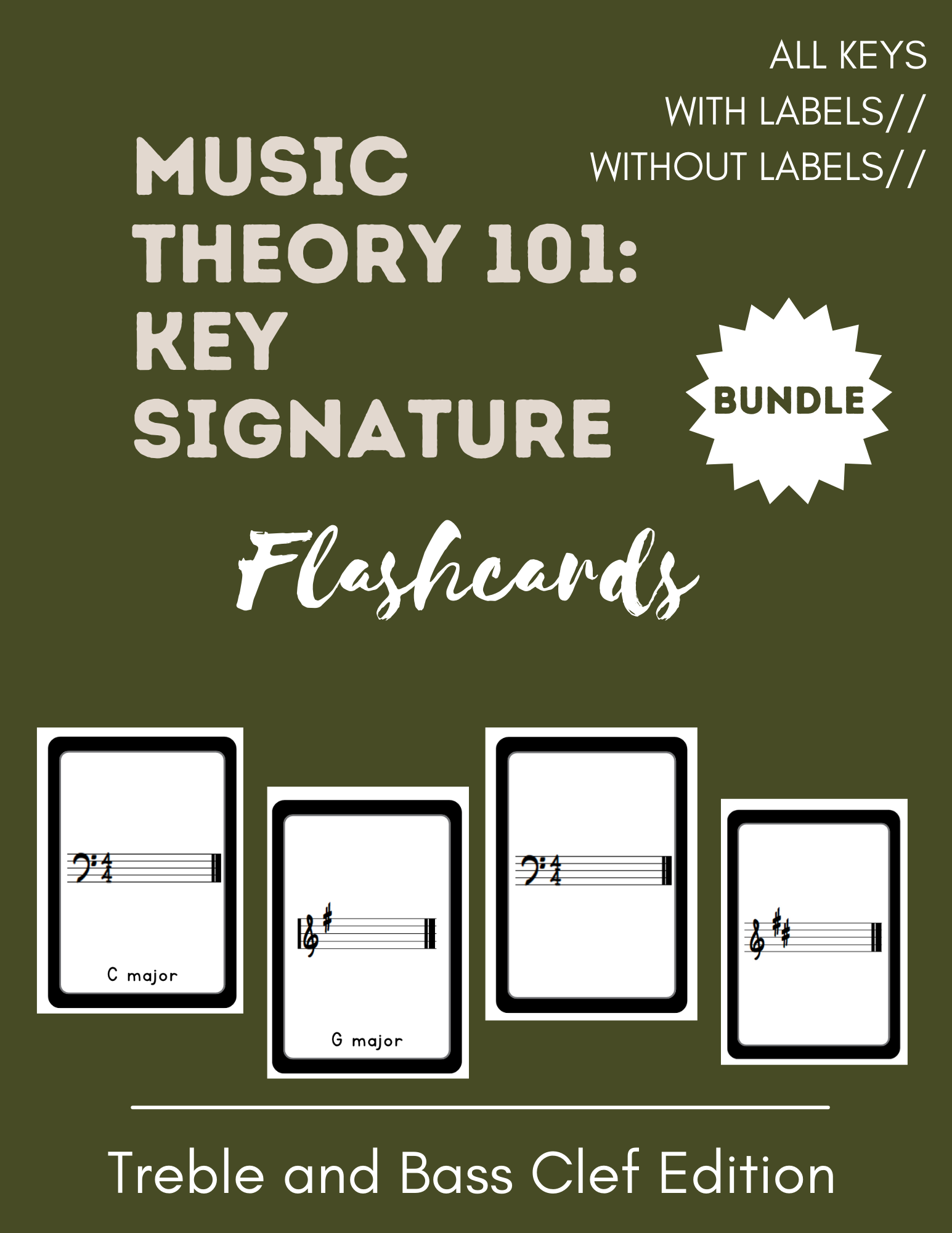
Key Signature Lesson Pack for Orchestra
The Key Signature Lesson Pack for Orchestra is for treble, alto, and bass clef instruments (violin, viola, cello, and bass). Students will practice naming, identifying, writing, and memorizing key signatures.
In this worksheet packet will get:
- Three Circle of 5ths Worksheet treble, alto, and bass clef with both major and relative minor key signature
- Blank Circle of 5ths Worksheet for treble, alto, and bass clef with both major and relative minor key signatures
- Can You Name The Key Worksheet for treble, alto, and bass clef
- Can You Name The Key Answer Key
- Key Signature Identification Worksheet for treble, alto, and bass clef
- Key Signature Identification Answer Key Worksheet for treble, alto, and bass clef
- Key Signature Worksheet
- Key Signature and Enharmonic Equivalent Power Point Lesson
These worksheets can be used as a review, formal or informal assessment, or left as materials for a substitute teacher.
Your students will master key signatures with these resources.
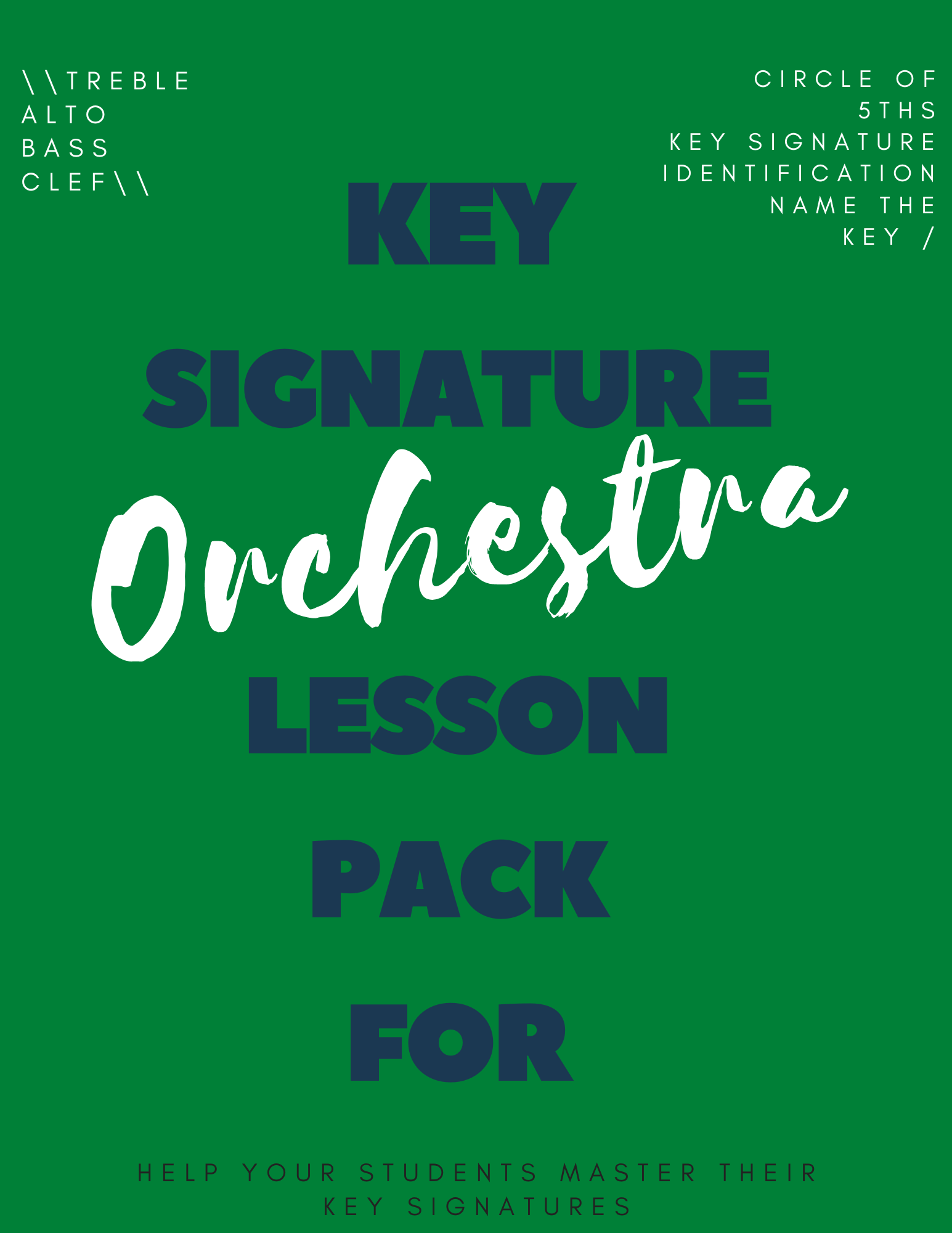
Conclusion
Knowledge of our key signatures is an important skill for any musician. Use the tools in this blog to help you or your students master the keys.